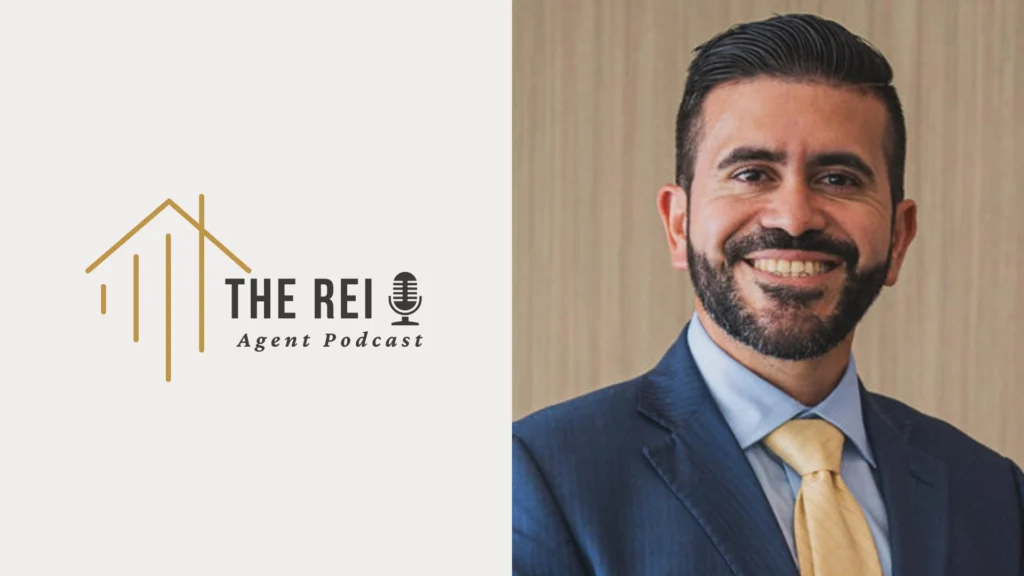So, you’re thinking about multi-family property investing?
Awesome!
But hold on a minute, because you’ve got to know a few essential tips to really rock it in this game.
Trust me, you don’t want to skip these steps.
First up, gotta get a grip on those market trends.
What’s hot and what’s not?
Is the neighborhood booming or going bust?
You need to know the 411 before you even think about putting down that cash.
And speaking of cash, dive deep into those financials. Look at every dollar coming in and going out. This is your base, your solid ground.
Next, you’ve got to nail that financing. It’s like the engine of your car. Without it, you’re going nowhere. So, find the best deals, compare rates, and lock in something that won’t leave you broke.
Location, location, location! Yeah, you’ve heard it a million times, but it’s true. Pick a spot that people want to live in. Good schools, cool parks, close to jobs – these things matter big time.
Now, don’t think you can do it all by yourself. Hire an experienced property manager. They’re like your right-hand person, handling all the stuff you don’t have time for. Trust me, they’ll make your life so much easier.
Regular upkeep is a must. You don’t want your place looking like it’s falling apart. Fix what’s broken and keep everything looking sharp.
And hey, plan for some cool upgrades to boost that property value.
Maybe a new pool? Or some fresh landscaping?
Stick to these tips and you’ll be cruising towards success.
Ready to maximize your returns and minimize your risks in this competitive real estate market?
Let’s go deeper to make it happen.
Understand Market Trends
Why should you care about market trends? Understanding market trends is vital if you want to make a sound investment in multi-family properties.
Start by analyzing the local market. This means looking at economic indicators like employment rates, income levels, and population growth. These factors directly influence rental demand, guiding you on where to invest.
Tenant demographics are another key element. Knowing who your potential tenants are can help you tailor your property features and marketing strategies. Look at age groups, family sizes, and lifestyle preferences in the area you’re evaluating.
Property appreciation is the goal of any investment. To predict appreciation, study past and current trends in the local real estate market. Competitive analysis will help you understand what similar properties are offering and at what price points, ensuring you stay attractive to potential renters.
Zoning regulations can impact your investment too. These laws dictate what you can and can’t do with your property, affecting everything from renovation plans to rental capacities.
Investment cycles are also essential to take into account. Real estate markets typically go through cycles of highs and lows. By understanding these cycles, you can time your investments for maximum returns.
Conduct Thorough Due Diligence
Conducting thorough due diligence is crucial when investing in multi-family properties. You need to be meticulous to guarantee that the investment is sound and aligns with your goals.
Start with extensive property inspections. Hire a professional to assess the building’s condition, including the roof, plumbing, electrical systems, and overall structural integrity. This step can reveal hidden issues that could cost you considerably down the line.
Next, focus on tenant screening. Review the current tenants’ lease agreements and payment histories. Understanding the tenant profile helps you gauge the stability of rental income and foresee any potential challenges.
Verify that the property complies with local housing regulations and that there are no outstanding legal issues.
Don’t overlook the neighborhood. Research crime rates, local amenities, and future development plans. These factors can impact your property’s value and attractiveness to potential tenants.
Talk to local property managers to get insights into rental demand and turnover rates in the area.
Analyze Financials Carefully
When you’re investing in multi-family properties, it’s essential to analyze the financials carefully.
Start by evaluating the rent roll to understand the current income and then calculate operating expenses to gauge profitability.
This detailed financial analysis helps you avoid unpleasant surprises and make informed decisions.
Assess Rent Roll
A thorough evaluation of the rent roll is essential when investing in multi-family properties. You need to scrutinize the rent roll to understand the property’s current income and gauge its future potential.
Start by examining tenant demographics. Knowing who your tenants are—families, young professionals, or retirees—helps you gauge stability and determine if the property meets the needs of the local rental market.
Next, look into rental demand in the area. High rental demand means you can maintain occupancy rates and potentially raise rents over time. Compare the rent roll with local market rents to see if the current rates are competitive. If tenants are paying below-market rent, there might be an opportunity to increase income, provided the market supports it.
Pay attention to the lease terms and turnover rates. Frequent turnovers can indicate issues with the property or management, affecting your profitability.
Verify that all tenants are current on their rent and check for any delinquencies. This will give you insight into the property’s financial health and help you avoid unpleasant surprises.
Calculate Operating Expenses
Calculating operating expenses is essential for understanding the true financial picture of a multi-family property. You need to carefully analyze all costs to guarantee the investment is worth your while.
Start by listing out major expenses like property tax, which can vary considerably depending on your location. Property taxes are a recurring cost that you must budget for accurately to avoid unpleasant surprises.
Next, consider utility costs. These can include water, electricity, gas, and trash removal. It’s critical to determine whether these expenses are covered by the tenants or if they’ll fall under your responsibility. An accurate estimate of these costs will help you gauge the property’s profitability better.
Don’t forget about insurance premiums. Property insurance is crucial for protecting your investment, but it’s another recurring expense you need to account for.
Maintenance and repair costs are also unavoidable. Regular upkeep guarantees the property remains attractive to tenants and retains its value.
Secure Proper Financing
Securing proper financing is vital for your success in multi-family property investments. To get started, you need to explore various financing options that suit your specific needs. Traditional bank loans are a common choice, but they’re not your only option. Consider government-backed loans like FHA or VA loans, which often provide better terms for multi-family properties.
Understanding different loan types is important. Conventional loans typically require higher credit scores and down payments but offer competitive interest rates. On the other hand, FHA loans have more lenient requirements, making them accessible if your credit isn’t perfect. For veterans, VA loans are a fantastic option, often allowing for zero down payment.
Don’t forget about alternative financing options like private lenders or hard money loans, especially if you’re looking for shorter-term solutions or have unique financial situations. These can be more flexible but may come with higher interest rates.
Before committing, calculate your potential returns and verify the loan terms align with your investment goals. Knowing your financing options and the specific loan types available will empower you to make informed decisions.
Proper financing sets the foundation for a profitable multi-family property investment.
Hire an Experienced Property Manager
Once you’ve secured the right financing, the next step to success in multi-family property investments is hiring an experienced property manager. A skilled property manager will handle the day-to-day operations, freeing up your time and ensuring the property runs smoothly.
They’re essential for maintaining excellent tenant relations, addressing issues promptly, and keeping tenants satisfied.
Effective property marketing is another area where a seasoned property manager shines. They know how to advertise vacancies, screen potential tenants, and fill units quickly, reducing the time your property sits empty.
With their expertise, you’ll attract high-quality tenants who pay rent on time and take care of their units.
Additionally, an experienced property manager will handle maintenance requests efficiently and coordinate repairs, ensuring the property remains in top condition.
They’ll also manage rent collection and enforce lease agreements, reducing the risk of late payments or legal issues.
Prioritize Location
When investing in multi-family properties, prioritizing location is essential. A prime location can make or break your investment.
First, you’ll want to assess the neighborhood’s safety. Safe neighborhoods attract more reliable tenants and reduce the risk of property damage. Check crime statistics and talk to local residents to get an accurate picture.
Next, consider the local amenities. Properties near schools, parks, shopping centers, and public transportation are in higher demand. Tenants value convenience, so proximity to these amenities will make your property more attractive and easier to rent out.
Additionally, look at the overall community vibe. Are there good restaurants, entertainment options, and healthcare facilities nearby? These factors can greatly influence a tenant’s decision to choose your property over another.
Another key aspect is the future development plans for the area. Is the local government planning new infrastructure projects or commercial developments? These can increase property values and rental demand over time.
Plan for Maintenance and Upgrades
Planning for maintenance and upgrades is essential when investing in multi-family properties. Without a solid plan, you might face unexpected costs and tenant dissatisfaction.
First, create detailed maintenance schedules. Regular check-ups and routine tasks prevent small issues from becoming big, expensive problems. Schedule inspections for plumbing, electrical systems, and HVAC units.
Don’t forget about common areas and exterior elements like roofing and landscaping. Consistent upkeep not only extends the life of your property but also keeps tenants happy.
Next, focus on upgrade budgeting. Renovations and improvements can greatly increase your property’s value and attract higher-paying tenants. Allocate funds specifically for upgrades like modernizing kitchens, bathrooms, and common areas.
Prioritize projects based on the potential return on investment. For instance, energy-efficient upgrades can reduce utility costs, benefiting both you and your tenants.
Additionally, set aside a contingency fund for unexpected repairs and emergencies. This guarantees you’re not caught off guard by sudden expenses.
Conclusion
By following these seven essential tips, you’ll be well on your way to successful multi-family property investments.
Understand market trends, conduct thorough due diligence, and analyze financials carefully. Secure the right financing, hire an experienced property manager, and prioritize location. Don’t forget to plan for maintenance and upgrades.
Stick to these strategies, and you’ll maximize your returns while minimizing risks in the competitive real estate market.





















